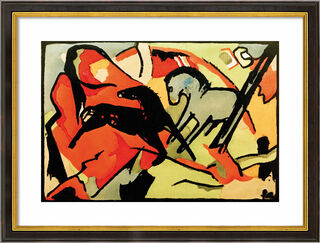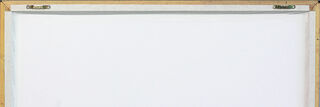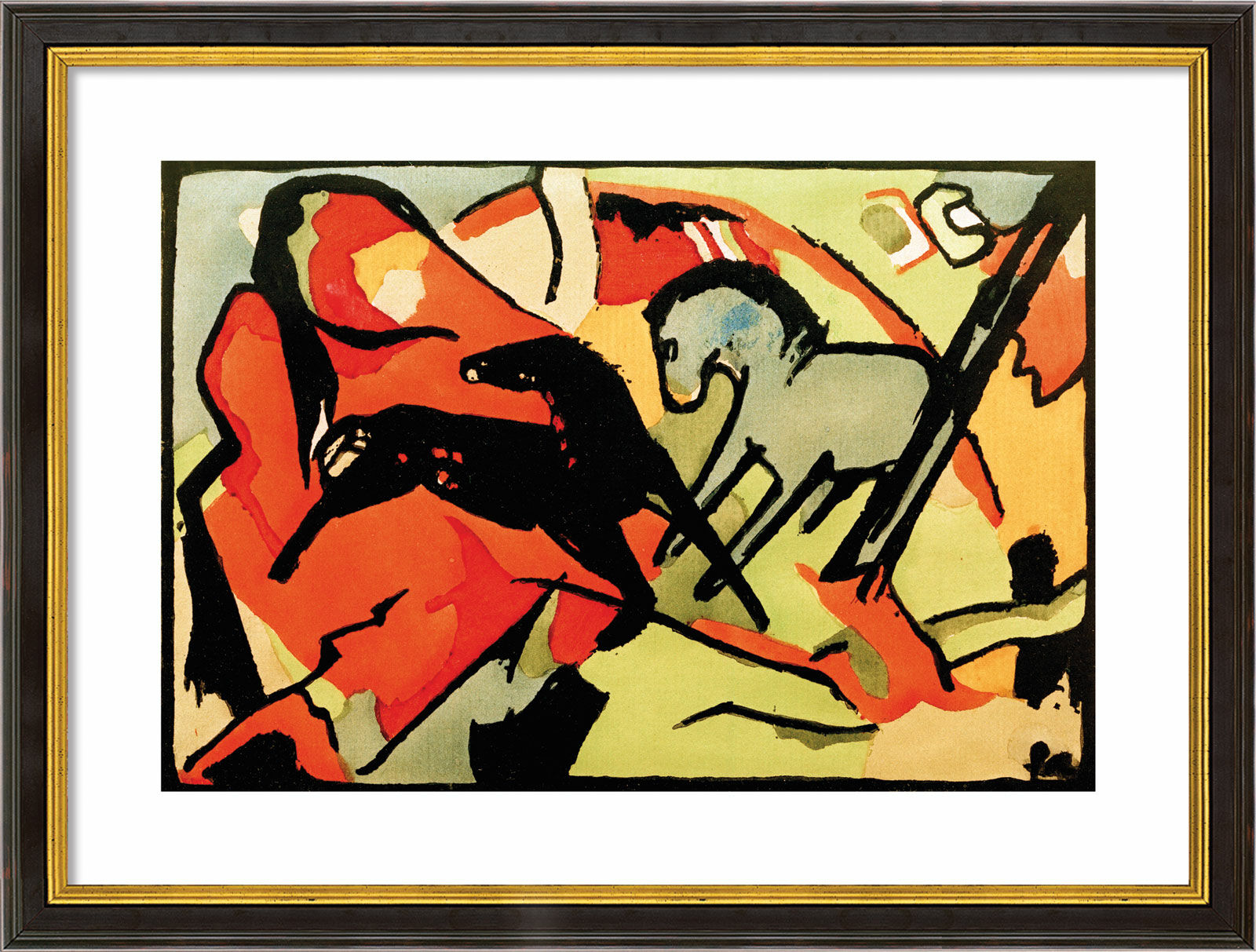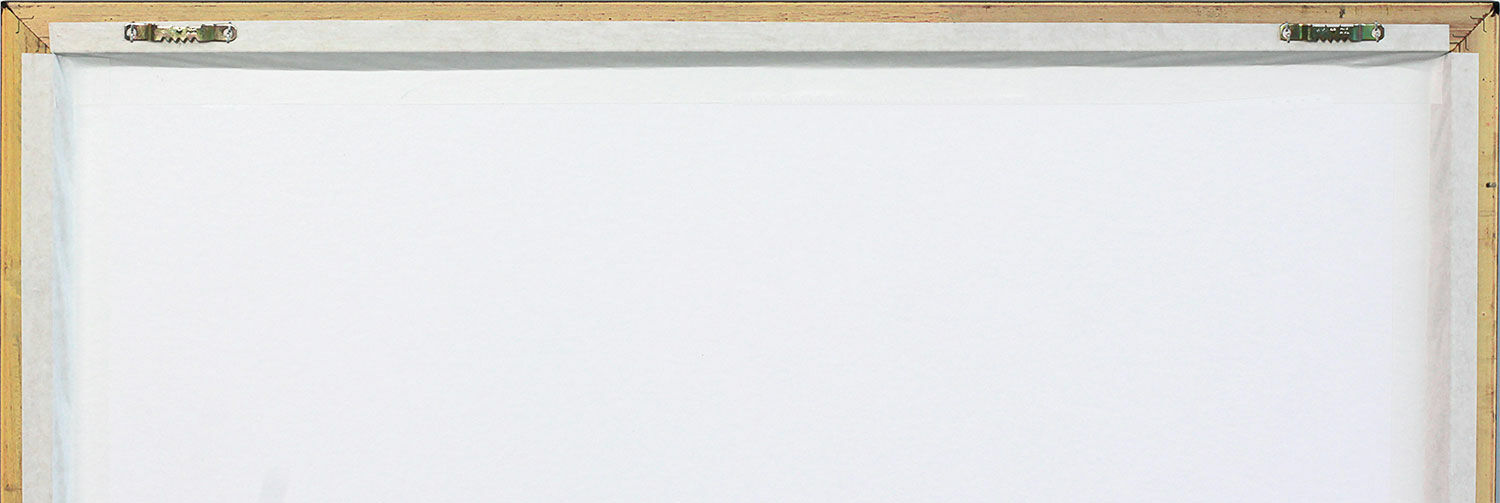Picture "Two Horses" (1911/12), framed


Picture "Two Horses" (1911/12), framed
Quick info
limited, 499 copies | reproduction, Giclée on real handmade watercolour paper | framed | glazed | size 40 x 53 cm (h/w)
Detailed description
Picture "Two Horses" (1911/12), framed
It was an extremely eventful time in which the "Two Horses" were created: Franz Marc met August Macke in 1910, and on New Year's Day 1911, he met Gabriele Münter, Marianne Werefkin and Wassily Kandinsky for the first time - through Alexej Jawlensky. Thus, within a short time, the members of one of the most important groups of artists of the 20th century had been assembled. In December 1911, the "Blaue Reiter" was founded, and Kandinsky later said about the name: "We both loved blue, Marc - horses, and I - equestrian. That's how the name arose naturally".
The original work, which was painted in mixed media, belongs to the collection of the Kunsthalle Hamburg.
Museum reproduction in high-quality Fine Art Giclée process on finest real handmade watercolour paper. Limited edition of 499 copies. Noble solid wood framing in black with gold, matt patinated, dustproof glazed. Size 40 x 53 cm (h/w).
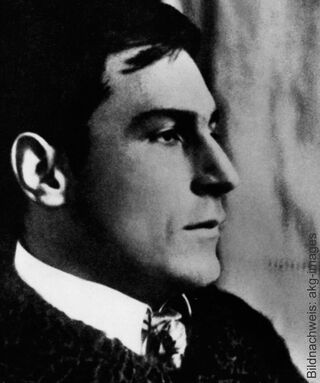
About Franz Marc
1880-1916
Franz Marc's unique talent was recognised and encouraged at the Munich Academy. On several trips to Paris, he discovered the works of van Gogh for the first time, which made a significant impression on him and helped him to develop an independent artistic language. Through his friend August Macke, he met Wassily Kandinsky, Gabriele Münter and Alfred Kubin, with whom he founded the Expressionist artists' association "Der Blaue Reiter" in 1911. At the outbreak of World War I, Marc was drafted into military service and died two years later in the Battle of Verdun.
Marc examined Naturalism, Art Nouveau and French Impressionism, but sought a new language of expression in order to be able to depict "the spiritual essence of things". With unprecedented consistency, he approached a new form of art in which colours acquired a symbolic meaning far beyond naturalistic representation: "Every colour must clearly say who and what it is, and must be set on clear shapes", Marc explained. For him, blue is the colour of the spiritual, red is love, passion and vulnerability, yellow is the sun and femininity.
Animal, in particular, were the focus of his painting, as they, in contrast to people, symbolised originality and purity to him. Just like Kandinsky, he sought the renewal of the spiritual in art.
Artistic movement that replaced Impressionism in the early 20th century.
Expressionism is the German form of the art revolution in painting, graphic art and sculpture, which found its precursor in the works of Paul Cézanne, Vincent van Gogh and Paul Gauguin in the late 19th century. The Expressionists attempted to advance to the primal elements of painting. With vibrant, unbroken colours in large areas and with the emphasis on the line and the resulting targeted suggestive expressiveness, they fought against the artistic taste established by the bourgeoisie.
The most important representatives of Expressionism were the founders of "Die Brücke" (The Bridge): Ernst Ludwig Kirchner, Erich Heckel, Karl Schmidt-Rottluff, Max Pechstein, Otto Mueller and Franz Marc, August Macke and others.
Masters of Viennese Expressionism are Egon Schiele and Oskar Kokoschka. Among the sculptors, Ernst Barlach is the most famous.
Fauvism is the French form of Expressionism.
Giclée = derived from the French verb gicler "to squirt, spurt".
The giclée method is a digital printing process. It is a high-resolution, large-format printout on an inkjet printer with special different-coloured dye- or pigment-based inks (usually six to twelve). The colours are fade-proof, i.e. resistant to harmful UV light. They have a high richness of nuance, contrast and saturation.
The giclée process is suitable for art canvases, handmade and watercolour paper as well as for silk.

